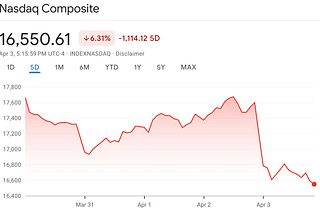
Shortly after the 2020 election I was chatting with a Republican strategist who’d done some work for several vulnerable-seeming GOP candidates who ultimately won their races, outperforming Donald Trump by several points.
The strategy these candidates used wasn’t rocket-science. In rural areas they ran ads touting their relationship with Trump. In the suburbs they ran ads that focused on the economy and crime, and pretended that Trump didn’t exist.
This isn’t the traditional pivot we used to see, where a Republican candidate would run as a severe conservative in the primary and then a practical moderate in the general election. That strategy was like a character turn. The new Republican strategy is to simultaneously present two different versions of the party to two different sets of voters—almost as if the candidate is running in two parallel universes—and hope that neither cohort really notices the other. Thus creating a political coalition without either side feeling like they were suckered.
It worked for Republicans in 2020 and they’re going to push it even further in 2022.
You might recall that prospects had been looking bleak for Republicans at all levels going into the summer of 2020. Joe Biden had a commanding lead in the polls and after Trump’s incompetent response to the pandemic and the murder of George Floyd, it seemed like R’s were toast. My focus groups were full of suburban women who voted for Trump in 2016 but couldn’t imagine voting for him again.
But by mid-summer the ground was shifting. The “defund the police” conversation was in full swing at the same time that peaceful protesting was giving way to some high-profile incidents of violent social unrest. I watched the switch happen in real time with swing voters: They were ready to support Biden and push Trump to the curb, but the news of the day was kickstarting their Republican instincts and making them anxious about giving total control of government to the Democrats.
That’s why I wrote a piece in June 2020 pleading with Biden to forcefully condemn the rioting:
We are at a moment when American attitudes toward police reform and race relations have tipped over. In the wake of George Floyd’s murder, nearly 75 percent of Americans have supported the protesters who have peacefully assembled to demand reform of law enforcement. A majority of Americans now have a positive view of the Black Lives Matter movement. And people are increasingly of the belief that Confederate statues are better suited to museums than public spaces.
The eruptions in Madison and elsewhere have the potential to stall this shift in attitudes because these same Americans emphatically do not want violent chaos. They want to make our justice system more just—but they reject mob rule. Biden eventually did condemn the riots, two months later. But that was too late. The narrative had hardened. Republicans had the ammunition they needed to go on offense. And while President Trump created a turnout tsunami both for and against him, he very much closed the gap, making Biden’s win closer than Democrats had hoped. Close enough to clip any coattails for down-ballot Dems. A critical margin of swing voters swung away from Trump in key states—but those voters hedged their bets by voting down-ticket for Republicans.
In short, swing voters loathed Donald Trump, but they liked the check Republicans could provide against Democratic ambitions and policies, especially the ones they really hated—such as defunding the police, big spending, and closing schools for COVID.
Seeing this check show up in the 2020 election was an early red flag for 2022.
And the red flags turned into blaring sirens a few months ago in Virginia when Glenn Youngkin successfully executed the same strategy to win the governor’s race in a state that had been Biden +10.
Though Youngkin didn’t face a real primary (and if he had, he might very well not have been the nominee), he spent the early part of his campaign touting his Trump endorsement and flirting with Trump’s election lies. Then he spent the latter half of the campaign ignoring Trump and focusing on issues that mattered to suburban voters: inflation, crime, and education. He kept the base inflamed by throwing red-meat chunks of CRT—but the vast majority of swing voters just saw a candidate who was going to make sure that schools would be open and parents wouldn’t be shut out from having a voice in their children’s education.
Republicans are going to try to carry this lesson further in November. They’ll use Donald Trump and his election lies to generate enthusiasm and turnout from the rural base. But they’ll go on offense against Democrats using crime, education, inflation, and exhaustion with COVID, which will resonate with traditional right-leaning independents and moderate GOP voters in the suburbs.
Which means that if the Democrats keep doing what they’re doing, Republicans are going to crush them.
However, unlike the late summer of 2020 when Democrats missed their window to correct course and hold on to a larger share of swing voters, Democrats still have some time to get their shit together.
It will require a long, hard look in the mirror and the self-awareness to recognize that the current strategy isn’t working. It will also require shaking off some amount of activist pressure, recognizing Biden’s narrow mandate, and an affirmative decision to go on offense on the issues that moderate Democrats (who are the actual Democratic base) and swing voters have told me during focus groups they care about most.
Here’s the list:
Offense on COVID. Dems can’t wave a magic wand and make COVID go away—voters understand that—but they can make it look like they’ve got a plan to deal with it and keep life as normal as possible for people. Bang the drum relentlessly that keeping schools open and the economy functioning are the number one priority of this administration. Cheap tests should be everywhere! The CDC is confusing! Get out front and explain things to people. Joe Biden must be the steady hand taking clear action. Pair that with a firm offense against the anti-vaxxers who dominate right-wing media and parts of Congress. They’re the reason we can’t put COVID in the rearview mirror. Swing voters and moderate Republicans are very annoyed that people won’t get vaccinated.
Offense on the economy. The only thing more important to voters right now than COVID is the economy. But they’re related. Solving COVID ameliorates the attendant economic problems the pandemic is causing (inflation, high gas prices, labor shortages, supply chain disruptions) that participants in my focus groups say are their biggest concerns. Biden can’t look passive on these issues. They’re making a huge impact on people’s daily lives. Also, the economy has some real bright spots—super low unemployment, for instance. Dems should talk about those bright spots. All the time!
Legislative offense. Democrats should stop killing themselves with omnibus legislation that can’t even get 50 votes among Democrats. You took a swing on BBB and you lost. It’s over. The voters are not interested in transformative change at the moment and neither are some Democratic senators, apparently. Face reality. Drop BBB. Take a few of the most popular provisions (that you know Manchin and Sinema are on board with) and force Republicans to vote on those. Stop infighting. The voters think this means you're ineffectual. Republicans are sitting around with buckets of popcorn. Stop giving them that.
Messaging offense. Okay, so you didn’t get your Build Back Better bill. But you did pass a $2 trillion COVID rescue plan that everyone’s already forgotten about and never had any idea what was in it, anyway. Why? Because Democrats didn’t talk about it. Also: Dems passed a pretty big bipartisan infrastructure bill that got 19 Republican senators to vote for it. Those are big wins! Put them in your pocket and go tell people about all the stuff that was in those bills. Push into Trump country. Tell them how you got them rural broadband. Because right now the public doesn’t know anything about these accomplishments.
Offense against Republicans. The silver lining for Democrats (though it’s not great for the country) is that the vast majority of Republican candidates running for office in 2022 are genuine MAGA wackos who might not be cognitively capable of keeping their mouths shut about Trump when talking to suburban voters. They might actually spend the whole campaign snuggling up to Trump and screaming about election conspiracies—many of these folks are certifiable! They scare moderates. Now, Democrats can’t win elections just by saying “We’re not insane like those guys.” But while you’re demonstrating that you can govern effectively on the points outlined above, you should still take a few moments to say, “Man, a bunch of those folks are really out of their minds. I mean, let’s just look at the ones whose last names start with G: Gosar. Gohmert. Greene. Gaetz.”
The great thing about offense is that it lets you set the narrative. Trump understood this well, using his morning tweets to set the day’s news agenda. Biden can do that too, albeit in a more constructive way. Call press conferences. Deliver regular statements. Don’t complain about the media focusing on the wrong things. Take control. Drive the news cycle. They’ll focus on your message if you’re relentless about putting a message out there.
But that means Americans need to see a lot more of Joe Biden.
Which brings us to the last point:
More POTUS. One of the complaints I hear all the time from Biden 2020 voters is how little they see of Joe Biden considering the ongoing crises the country is facing. Biden has to show leadership on COVID and give people clear information that allows them to navigate their lives with less anxiety and more normalcy, as well as project confidence about America’s economic future. If he does this, he’ll be 75 percent of the way to improving his standing with Democratic base voters and swing voters. This will trigger a virtuous cycle of climbing poll numbers and better headlines.
But Biden can’t do it alone. Democrats need to deploy an army of surrogates all carrying the same affirmative messages. Republicans are masters at message discipline and Democrats need to drill their messages with the same relentlessness.
The stakes, you might have noticed, are extremely high. Republicans are running candidates at all levels of government who believe the last election was stolen and want to be in a position to overturn election results they don’t like. It’s not just about Trump anymore. 2022 could see a wholesale takeover of the Republican party—at all levels—by MAGA true believers.
Would all of this Democratic regrouping be enough to hold the House? Probably not. But there is a big difference between a market correction and a wave election. And that difference will weigh heavily on 2024.
Joe Biden waited too long to seize the narrative in 2020. He shouldn’t make the same mistake going into 2022.












